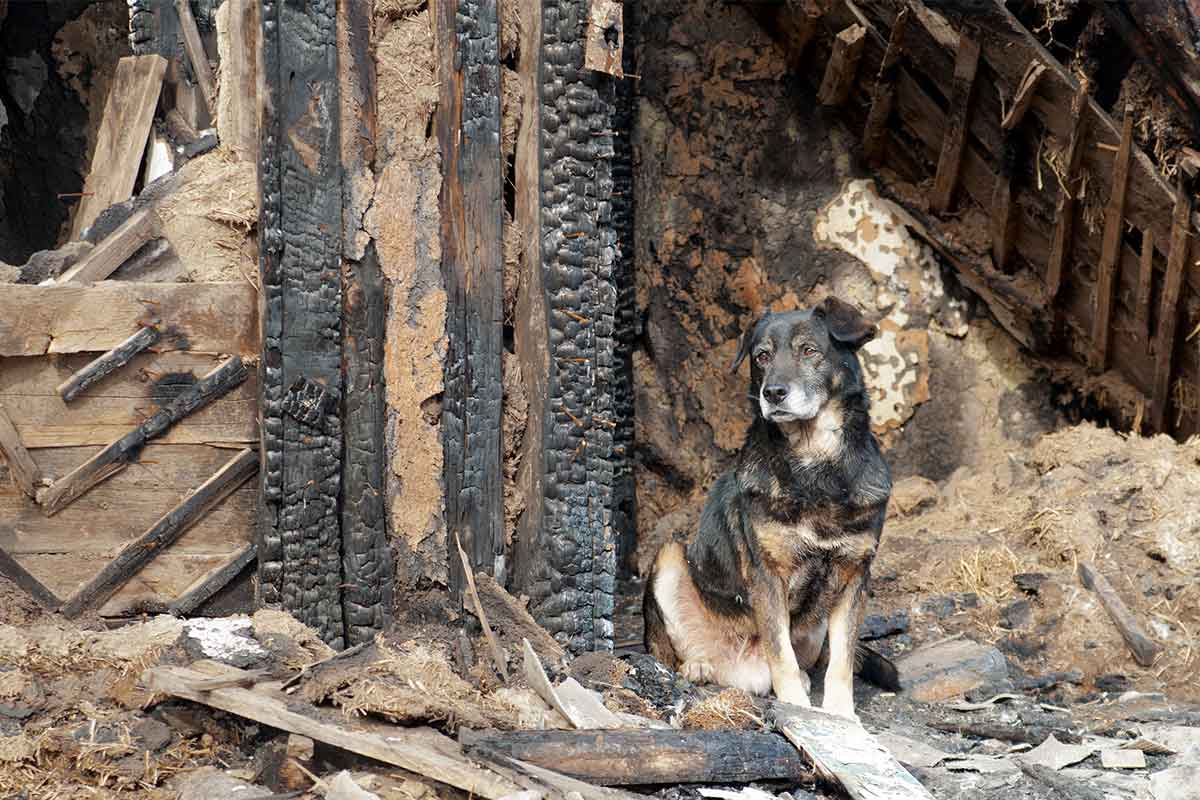As Hurricane Harvey heads toward the southeastern coast of the United States, it’s a good idea to review your family’s disaster preparedness plan. You do have one, right? Whether you live in Tornado Alley or an earthquake, fire, or flood zone, you need to have a plan to ensure the safety of family members, including pets, in the event of a natural disaster. Here’s our six-step plan for pet disaster preparedness.
1. Teach pets to come when called. This is the one cue that every pet should have down cold. Whether you shout their name, blow a whistle, ring a bell, flash a light, or gain their attention in some other way, your pets should run to you immediately. We’re talking cats, too. When you need to leave in a hurry, every second counts.
2. Know your pets’ hiding places. Changes in atmospheric pressure, the smell of smoke, high winds, tremors in the earth—all can give pets the heebie-jeebies. Your pet may normally come when called, but if disaster is in the air, he may think it’s a better idea to hide. Know where to seek him out.
3. Teach your pet to love his carrier. If your dog or cat considers his carrier a safe space, it may be the first place he goes to feel secure, which makes it easier for you to transport him. Encourage his love of carrier by leaving it out in an area where your pet likes to spend time, stashing goodies in it for him to find or feeding meals in it, and spritzing it regularly with species-specific pheromones to leave a welcoming chemical invitation.
4. Put ID on pets. A visible form of ID, such as a collar and tag with your cell phone number and a secondary phone number, combined with a permanent method such as a microchip can help to ensure that you and your pet are reunited if you’re separated during a disaster. It’s also a good idea to keep a photo of yourself and your pet together on your phone or in the cloud to serve as proof of ownership.
5. Pack a pet go-bag. Besides a carrier, several days’ worth of food and drinking water, a bag of litter for cats, and plenty of poop pickup bags, include leashes, harnesses, and a muzzle that your pet is already accustomed to wearing. Even animals who are normally laidback may panic in an emergency, especially if they are injured. Being able to restrain and contain them is essential to their safety and yours. Other items to include are up-to-date vaccination records, your pet’s microchip or tattoo numbers, and feeding and medication information.
6. Know where you can go. In countless disasters, people who have no access to shelters that allow pets have put their lives and the lives of first responders at risk because they refuse to evacuate without their pets. Have a plan that includes the names and phone numbers of friends or family willing to take you in—pets and all—or motels, hotels, or boarding kennels where you can go with your pets. Local animal shelters, veterinarians, and the Red Cross can advise you of pet-friendly shelters or other options in your community.
Even better, be prepared to help. Seek out disaster-response training. Even if your home and family are untouched by a disaster, you can help in such ways as distributing food to stranded animals, transporting lost pets to a shelter so they can be reunited with their people, and fostering pets who need a place to stay.
This article was reviewed/edited by board-certified veterinary behaviorist Dr. Kenneth Martin and/or veterinary technician specialist in behavior Debbie Martin, LVT.








